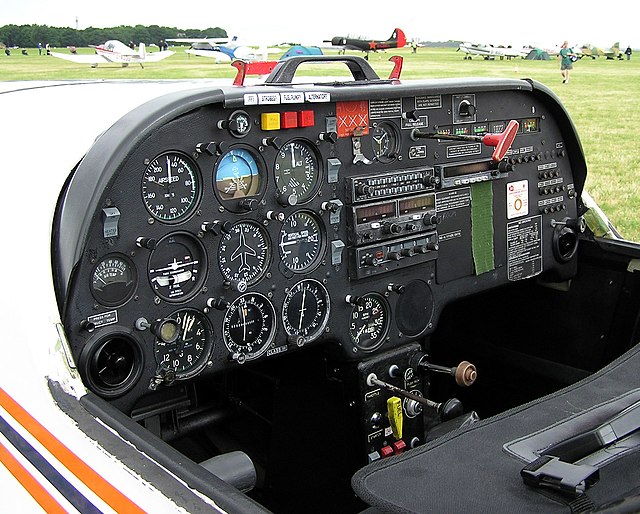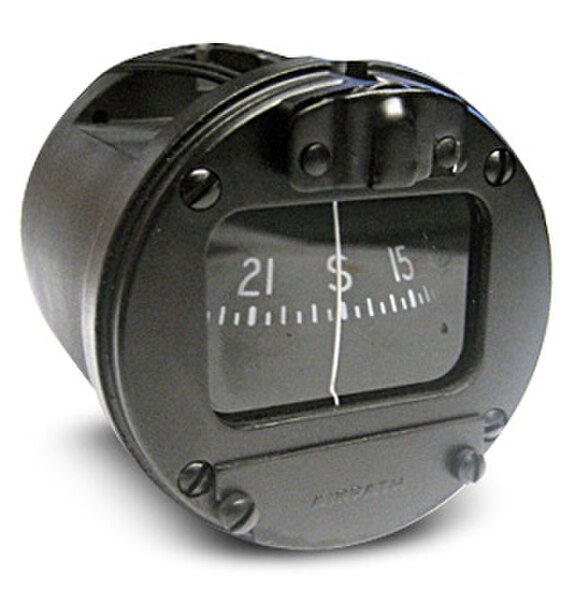Instrument meteorological conditions
In aviation, instrument meteorological conditions (IMC) are weather conditions that require pilots to fly primarily by reference to flight instruments, and therefore under instrument flight rules (IFR), as opposed to flying by outside visual references under visual flight rules (VFR). Typically, this means flying in cloud or poor weather, where little or nothing can be seen or recognised when looking out of the window. Simulated IMC can be achieved for training purposes by wearing view-limiting devices, which restrict outside vision and force the trainee to rely on instrument indications only.
A pilot's view of the runway just before landing in thick fog at night
Summary of United States VMC minima (14 CFR 91.155), providing requirements for minimum visibility and separation from clouds for different airspace classes. In this example, for airspace classes C/D/E up to an altitude of 10,000 ft (3,000 m) AMSL, whether day or night, VMC minima require 3 miles (5 km) of visibility (denoted "3 SM") and cloud clearance of 1,000 ft (300 m) above, 500 ft (150 m) below, and 2,000 ft (610 m) horizontally ("152").
Flight instruments are the instruments in the cockpit of an aircraft that provide the pilot with data about the flight situation of that aircraft, such as altitude, airspeed, vertical speed, heading and much more other crucial information in flight. They improve safety by allowing the pilot to fly the aircraft in level flight, and make turns, without a reference outside the aircraft such as the horizon. Visual flight rules (VFR) require an airspeed indicator, an altimeter, and a compass or other suitable magnetic direction indicator. Instrument flight rules (IFR) additionally require a gyroscopic pitch-bank, direction and rate of turn indicator, plus a slip-skid indicator, adjustable altimeter, and a clock. Flight into instrument meteorological conditions (IMC) require radio navigation instruments for precise takeoffs and landings.
The cockpit of a Slingsby T-67 Firefly two-seat light airplane. The flight instruments are visible on the left of the instrument panel
Six basic instruments in a light twin-engine airplane arranged in a "basic-T". From top left: airspeed indicator, attitude indicator, altimeter, turn coordinator, heading indicator, and vertical speed indicator
Image: Aero Magnetic Compass





